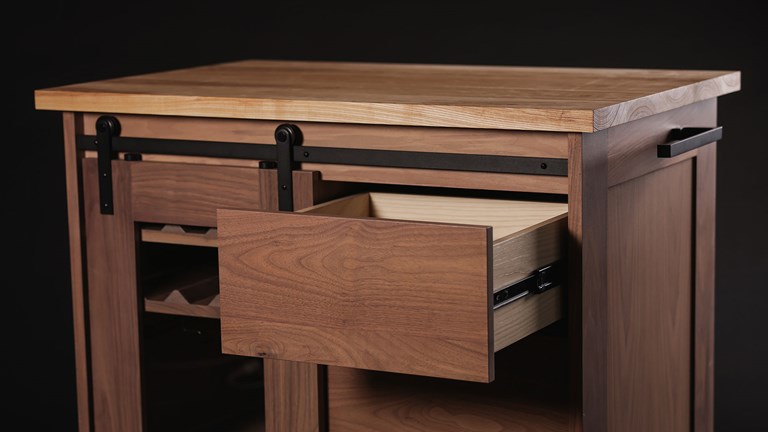
Integrated Technologies
Students undertaking the VCE VET Integrated Technologies program work with a range of electronic systems and components, including programmable logic devices, computer networks, sustainable energy devices, robots and rechargeable battery banks. This work demonstrates a range of capabilities, including originality, creativity and the ability to refine ideas with a specific audience in mind.
Benjamin Wallace
Northern College of the Arts and Technology, Preston / Thornbury High School, Thornbury
Wurundjeri Country
Neuro Variable Lighting System
Arduino microcontroller, brain-computer interface (BCI) headband, NUC computer, Arduino housing, pine product display, RGB strip lighting, electrical components
My project adjusts the strength and hue of lighting within a room, based off brain activity detected by the brain-computer interface (BCI) device. The project aims to inspire people to optimise the lighting within their home by adjusting the ambience of a room to specific moods and activity levels. The project also showcases emerging BCI technology and how it can be integrated with existing, established devices.
Unit of Competency
VU23113 Carry out an integrated technologies project
Erin Stewardson
Northern College of the Arts and Technology, Preston / Ivanhoe Girls’ Grammar School, Ivanhoe
Wurundjeri Country
Driver Fatigue Detector
Arduino microcontroller, Vero Board, electronic components, 3D printed housing box, webcam, smart phone, power cables
My Driver Fatigue Detector aims to reduce the road death toll by detecting when drivers are getting sleepy and waking them up with a loud audio output. This product protects individuals with fatigue-related conditions, such as sleep apnea, who are at greater risk of falling asleep while driving. The device monitors the driver’s face with a webcam, detects eye closure and then triggers a loud audio output via Bluetooth to the driver’s smartphone.
Unit of Competency
VU23113 Carry out an integrated technologies project




